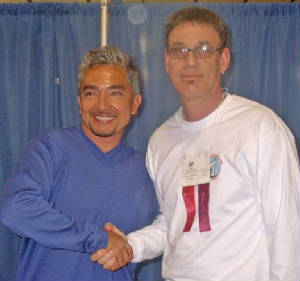When you are out and about and see a cute dog, your first instinct might be to pet him. We get it. Dogs are cute and cuddly. But there are many reasons not to rush in and pet the dog. He may be in training, uncomfortable around strangers, or have a medical issue you are not aware of. The dog and his owner may be in a hurry or may not be in the mood for chatting.
Even if the dog is happy to receive pets, you will also want to use the right technique to keep him comfortable. This may be different from the way you interact with your own dogs, but using this approach - and teaching your children to do the same - can help protect you from dog bites, misunderstandings, and uncomfortable experiences.
Greeting a Dog Safely and Politely
The first step when you see a dog you want to pet is always to ask the owner if it is alright. The owner may know that their dog is not good with strangers, be training their dog to be less reactive on leash, or dozens of other reasons why now is not a good time for the dog to interact. When the owner says no, accept and move on. The refusal is not personal.
If you see a dog tied up without an owner present, it is best to leave the dog alone or wait until the owner comes back to ask. This way, you avoid any injuries or unwanted experiences.
Once you get permission from the owner to pet a dog, you now need to get permission from the dog before you pet him in a comfortable way. You can do this by:
- Letting the Dog Come to You - Stand back from the dog and wait for him to come to you. You don’t need to stick your hand out for the dog to sniff as he can smell you fine from a distance, and he will come closer if he feels comfortable. If the dog keeps away, he is not interested and it is best to move on.
- Avoiding Direct Eye Contact - Dogs regarding staring as a challenge, and it can seem threatening when you first meet. Instead, watch the dog out of your peripheral vision.
- Reaching from the Side - Avoid reaching over a dog’s head or touching him from behind. These actions can be startling and leave the dog feeling anxious and out of control.
- Petting Sides, Back, or Chest - Most dogs actually dislike pats on the head. The safest places to pet a dog in a first meeting are the sides, chest, or back as long as you are reaching from the side. You can also ask the owner if the dog has a favorite spot for pets.
- Reading Body Language - When they are uncomfortable, dogs’ body language can include trying to move away, a closed mouth, pinned back ears, and lip licking. If a dog starts displaying any of this behavior, it is best to leave them alone.
Throughout the interaction, avoid leaning over the dog since this can be overwhelming. You can kneel if you feel comfortable with the dog and are sure he will not lunge.
Knowing these steps as an owner can be helpful as you guide strangers to interacting positively with your dog. And as an owner, you are your dog’s advocate, so you are always entitled to tell people “no” when they want to pet your dog. A few bad interactions can cause issues with socialization and it is better to practice caution that puts your dog in a risky situation.





